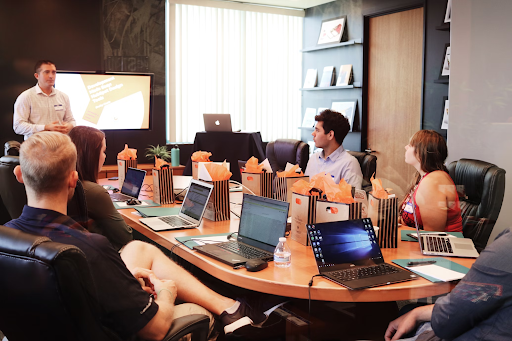
The benefits of taking health and safety training to mobile
Not only do organisations have a duty of care for their employees, but it’s in their interests to protect themselves legally too, so health and safety training is a necessity. Without it, organisations see an increased number of accidents, which can be detrimental in a number of ways.
Firstly, failing to protect employees adequately can result in legal action. This can lead to enormous costs and have a negative impact on your company’s reputation. Workplace accidents create a negative image for organisations, highlighting a lack of responsibility and compassion for their employees. More accidents also lead to more absences and therefore a cut in productivity, which creates additional costs through finding cover for absent workers. These consequences not only affect employee retention and reputation, but also mean that hiring new employees can become a lot more difficult - who wants to work in an environment where they could potentially be hurt?
Therefore, safeguarding your business and providing effective health and safety training is an important factor in ensuring the sustainability of your business. But what is the most effective way to deliver this training and make sure it actually works? In the last few years mobile training has become increasingly popular, with statistics from 2017 showing that 91% of minutes spent on the internet, such as social media use, is through mobile. It is clear that adults are turning to their mobile to do most things, including learning. It also showed that 47% of organisations use mobile devices for training and this number was expected to double by 2018, meaning mobile training is even more common. So, why is this training method so popular?
Taking employee training to mobile has various benefits, including accessibility and flexibility. It gives employees the freedom to complete mandatory training wherever they choose and at any time that suits them. This type of training usually has multi-device support, meaning the courses can be completed on any device that connects to the internet. At Wranx, we offer a Media Hub on our platform, meaning that employees can access past or current content that is related to their training in a variety of formats to encourage self-directed learning in health and safety.
Mobile training is also more effective at engaging employees. Traditional training methods like classroom learning are still used but are slowly becoming outdated; the environment of the classroom is reminiscent of school, which can be tedious to people. This also means pulling employees out of their normal work day, which can be costly and affect productivity.
It also typically excludes employees who work night shifts, which is common in manufacturing industries. Mobile training avoids this exclusion, as the training is available for them to complete at a time convenient for them, meaning less risk to those who may have missed out on health and safety training sessions.
Health and safety covers an extensive range of topics and can be time consuming to teach. Therefore, blending mobile and microlearning is considered to be the future of employee knowledge, as smaller amounts of information spread across a period of time is more likely to be retained. Blending microlearning and mobile also supports the notion of just-in-time learning, meaning it is available at the moment of their learning need. Microlearning is easily personalised meaning they can be changed to suit the variety of learners in a workforce.
It is every business’ responsibility to deliver adequate health and safety training, not only to protect their employees but to ensure the sustainability of their organisation. This has worked in the past for Soletanche Bachy, who used Wranx to deliver health and safety training to its senior management staff via mobile. This produced an 81% engagement level and significantly reduced the amount of accidents after training was implemented. There are clear benefits of mobile training, as it provides accessibility and flexibility whilst keeping learners fully engaged. Blending this delivery method with microlearning will effectively improve employee’s knowledge retention and reduce accidents in the workplace.


